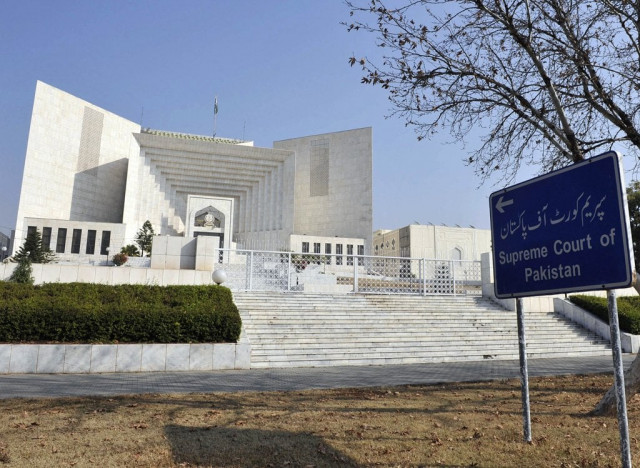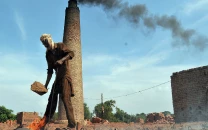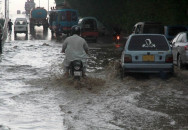SC orders formation of NAP to curb drug abuse
Justice Ahsan observes drugs are ‘eating away the youth’

Supreme Court of Pakistan. PHOTO: AFP
A three-member bench, headed by Chief Justice Mian Saqib Nisar, was hearing a suo motu case pertaining to selling of drugs at educational institutions.
The apex court directed the Ministry of Information to start a public service campaign against use of drugs, particularly at educational institutions.
The top judge said he was informed about young girls using drugs. “The issue affects millions,” he remarked.
Justice Ijazul Ahsan observed that drug abuse was “eating away the youth”.
The court ordered all chief secretaries, head of narcotics division and federal minister concerned to hold a meeting and suggest recommendations for a NAP within a week to curb the menace of drugs.
High courts can’t take suo motu notice, says SC
The bench expressed dissatisfaction over the performance of the federal and provincial governments in this matter. The court noted that the Pakistan Tehreek-e-Insaf was ruling in three provinces, but had not taken any step to curb this menace.
Following the court’s order of December 26, 2018 regarding establishment of a rehabilitation centre for drug addicts, Additional Advocate General Punjab Chaudhry Faisal Hussain submitted a report stating that the treatment centre at the Punjab Institute of Mental Health could not be made operational due to the stay order on the recruitment process of 241 new posts by the Lahore High Court since March last year.
“The Punjab government has created new posts through schedule of new expenditure on February 19, 2018 and conducted interviews of all candidates who applied for the posts by March 26, 2018. However the recruitment process was stayed by the LHC on March 26, 2018. It assured that upon adjudication of the writ petition by the LHC, the recruitment process will be finalised without any loss of time so as to make the treatment centre at the Punjab Institute of Mental Health Lahore operational at the earliest,” says the report submitted by the AAG on behalf of the Punjab chief secretary about actions taken by the provincial government to curb the menace of drugs.
The report reveals that since 2012, a total of 7,377 patients suffering from drug addiction were treated as indoor patients whereas 40,577 such patients were extended treatment as outdoor patients.
Likewise, during five years a total number of 118,245 offenders addicted to various kinds of drugs were imprisoned in Punjab.
Of these, 109,409 were treated as outdoor patients in prison hospitals whereas 32,227 were admitted to prison hospitals in dedicated wards/ beds and detoxified.
Govt’s inability to increase IHC judges draws SC ire
The construction of a 20-bed unit for treatment of drug addicts at Central jail Lahore is underway at a total cost Rs24.983 million, says the report.
It is also submitted that as per Section 54 of the Control of Narcotics and Substances Act 1997, the federal government is empowered to constitute a fund to be called the National Fund for Control of Drug Abuses.
Likewise, AAG Hussain submitted a report about the outcome of the meeting chaired by Punjab Chief Secretary Yousaf Nasem Khokhar to discuss the anti-narcotics measures taken by the educational institutions in the province of Punjab.
During the meeting, the minister for school education department informed that reportedly drug tendencies are predominantly rampant amongst the students of private schools and suggested random blood testing of students. However, chief secretary recommended to get a legal opinion from the law secretary in this context prior to proceeding further in the matter.
Meanwhile, according to the Punjab police report, at least 466 arrests were made in the matter.












1726134115-0/BeFunk_-(41)1726134115-0-208x130.webp)






COMMENTS
Comments are moderated and generally will be posted if they are on-topic and not abusive.
For more information, please see our Comments FAQ